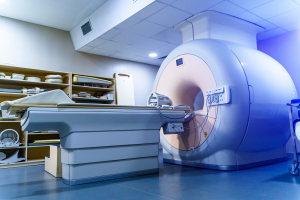by
John R. Fischer, Senior Reporter | January 26, 2021

Justifying when diagnostic imaging with radiation is appropriate comes with many factors that all have their own challenges
Justification for an imaging exam, and the radiation exposure that comes with it, is a fundamental principle behind every patient scan. And yet, by some estimates, anywhere between 20% to 50% of radiology exams are likely to be inappropriate and provide little to no clinical benefit.
Researchers from the European Society of Radiology discussed the challenges of justification in a paper.
Here are a few of them:



Ad Statistics
Times Displayed: 365187
Times Visited: 6996 Quality remanufactured Certified Centrifuges at Great prices! Fully warranted and backed by a company you can trust! Call or click for a free quote today! www.Centrifugestore.com 800-457-7576
1. Patient expectations Patients may not understand the effects and risks of radiation. Many often put their desire for imaging to be performed over concerns of radiation exposure, except when it comes to children. Family doctors and medical specialists often find it hard to say no to exams requested out of fear that it will break the patient’s trust in them.
2. Allocating resources High equipment costs make imaging services expensive. Without enough funding, radiology practices are unable to meet increased demand for greater numbers and more complex imaging. Imaging should only be justified in cases where input is most efficient and effective, such as when exams incorporate evidence-based protocols and clinical pathways; are agreed upon by a multidisciplinary medical team; and facilitated by computerized decision support (CDS) systems.
3. Safety culture Safety culture in radiology should allow for staff to challenge a practice if it may not be in the best interest of the patient or them. Protocols for conflict review and resolution should also be developed. Safety, however, should not be an excuse for not abiding by responsibilities laid out in policies and guidelines such as the Euratom Basic Safety Standards Directive, which oversees regulatory requirements of radiation protection for most of Europe.
4. Healthcare pathways While justification is used to determine appropriate radiation exposure, it does not take completely into account how radiation is delivered in healthcare. Justification in diagnostic imaging is often part of a predefined healthcare pathway that includes an initial assessment and periodic follow-up imaging. An initial imaging procedure may be justified because further imaging is expected but justifying further imaging is treated separately. Until initial imaging occurs, further imaging cannot be justified, illustrating a disconnect. It may be better, the authors say, to justify a series of exposures as part of an expected care pathway and reassess justification for some or all of subsequent procedures as the patient’s condition develops and care is subsequently modified.

